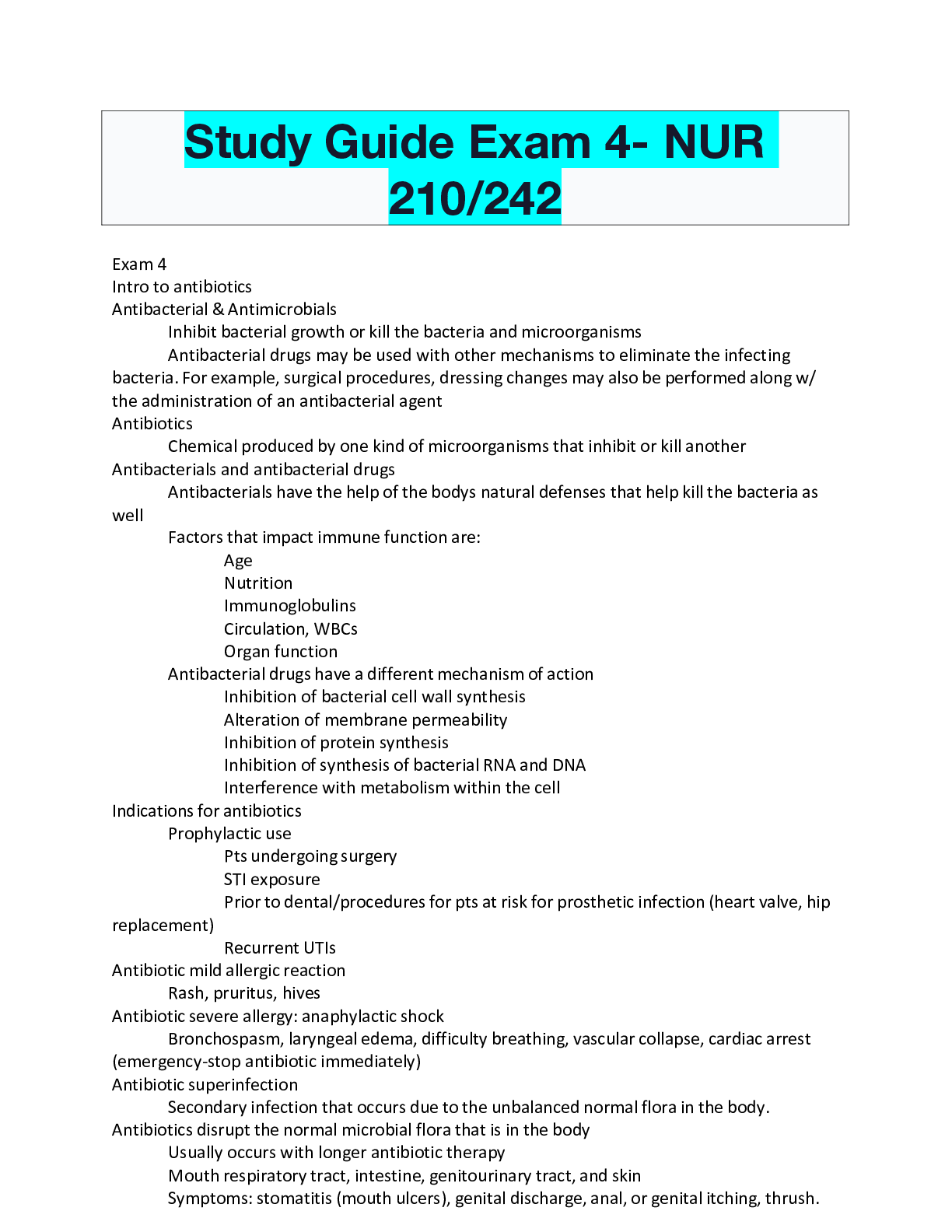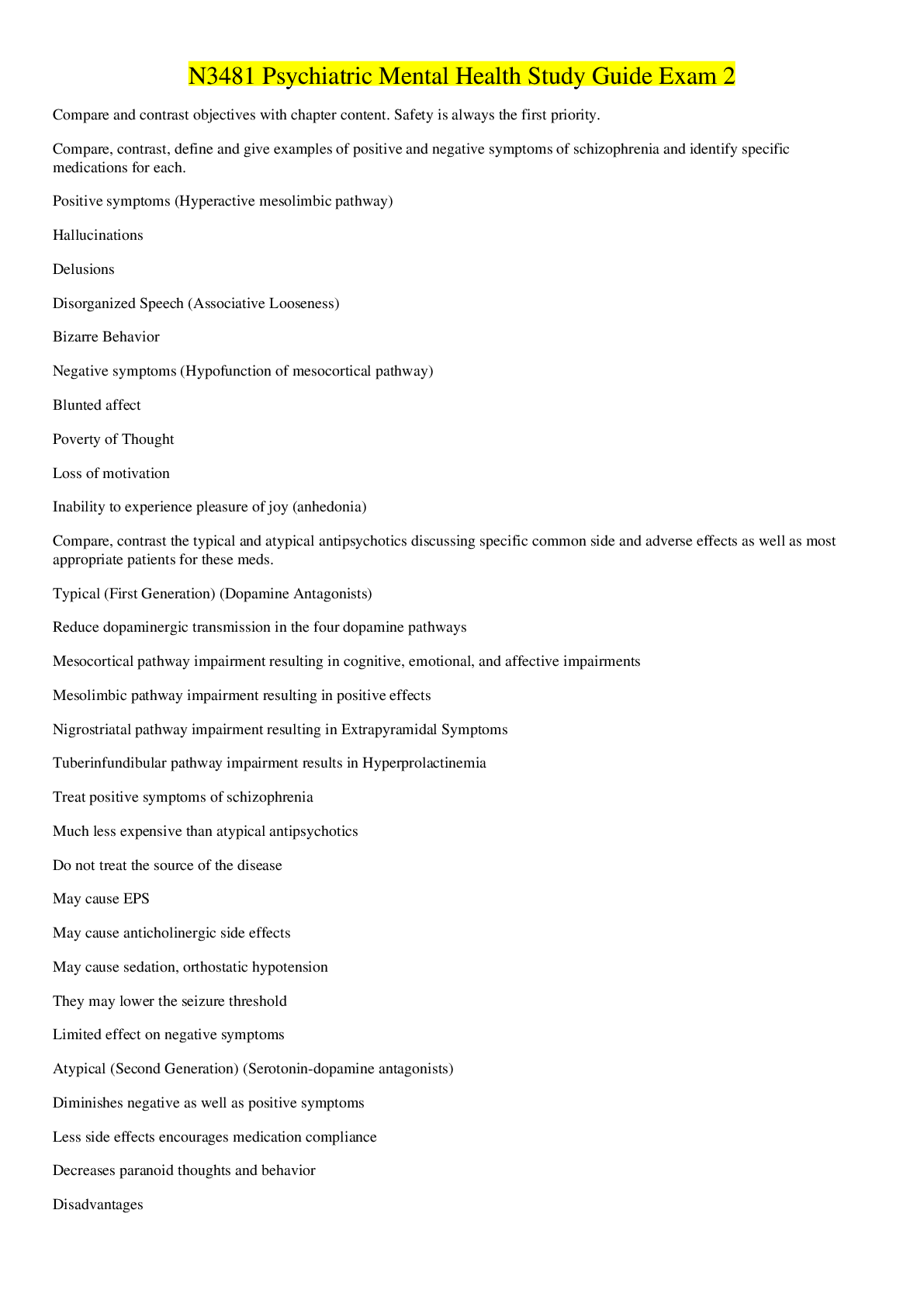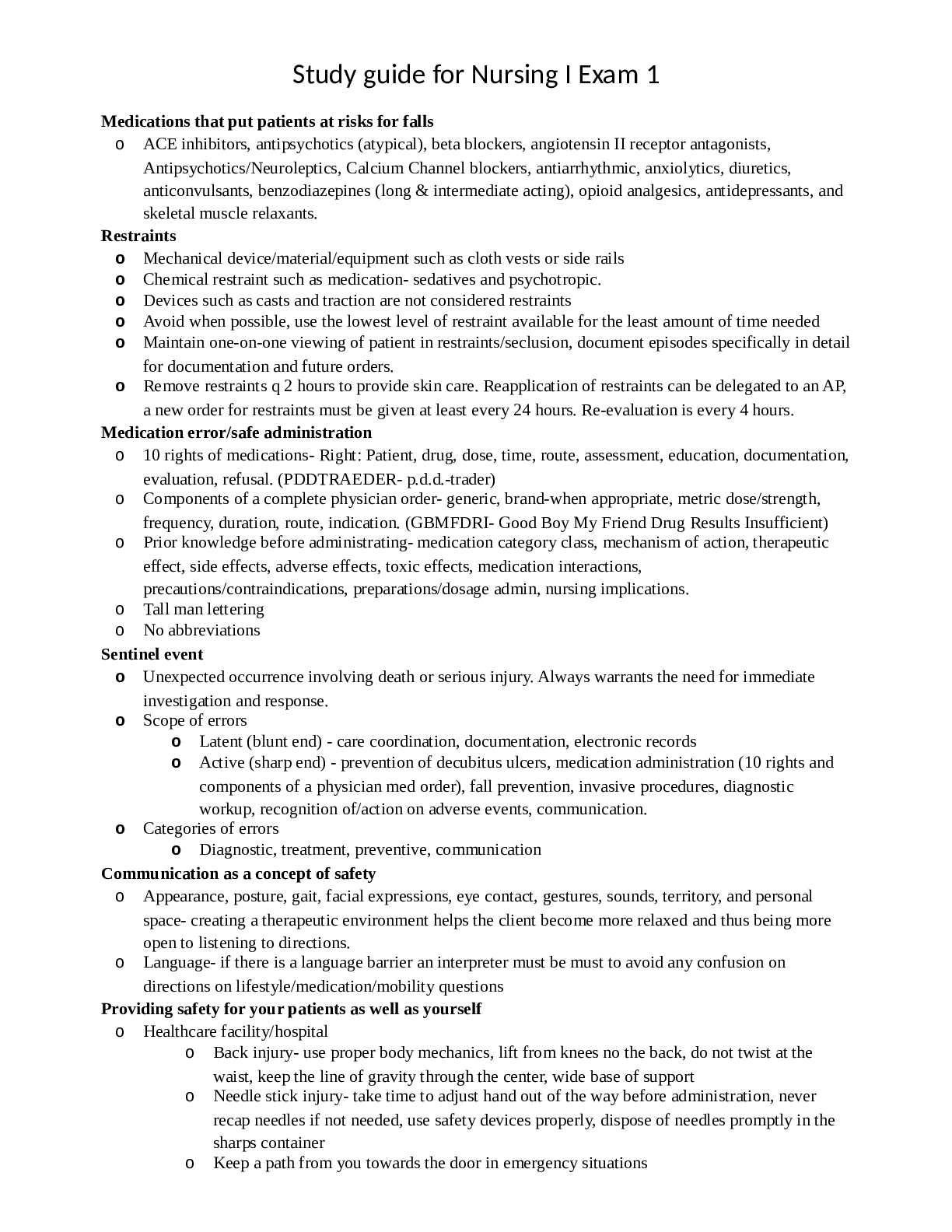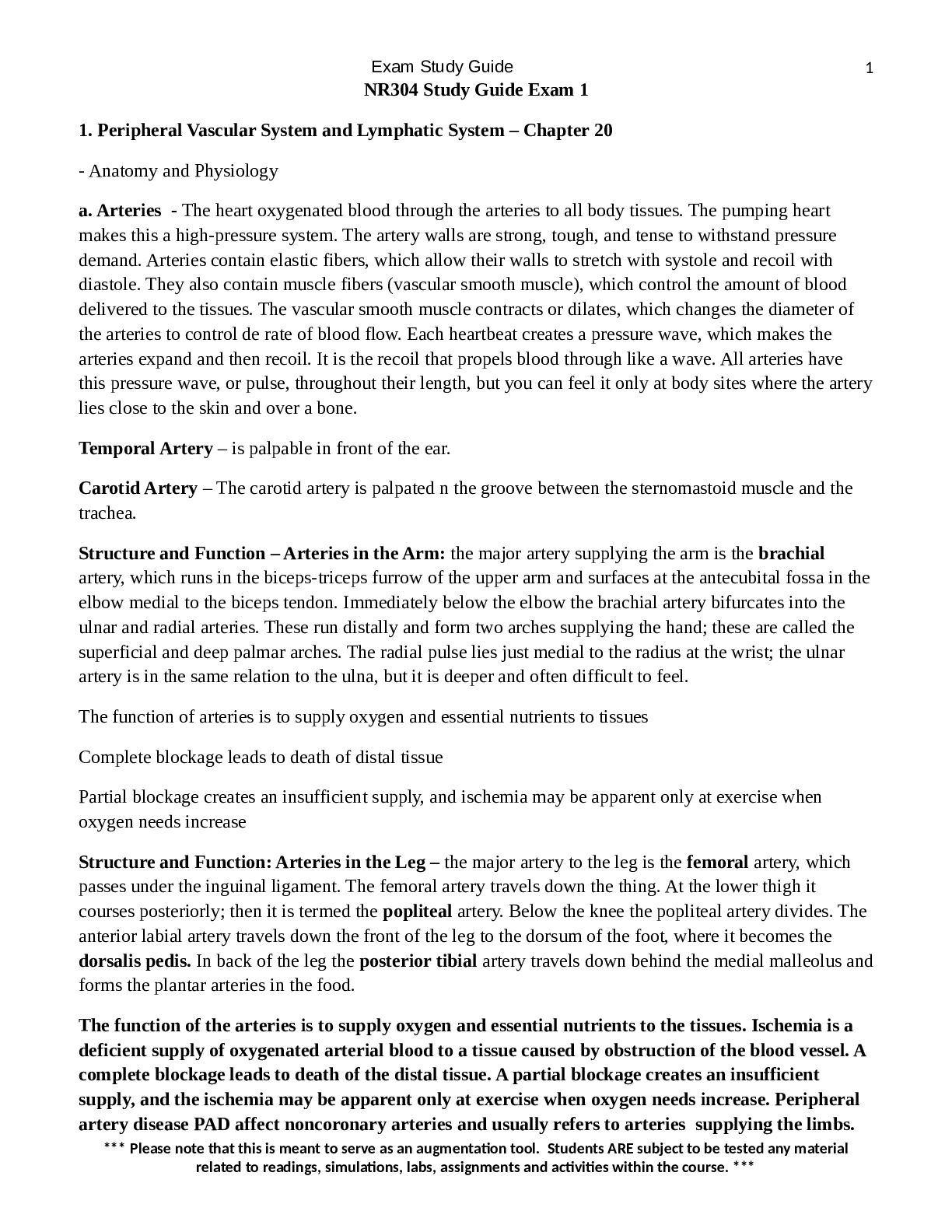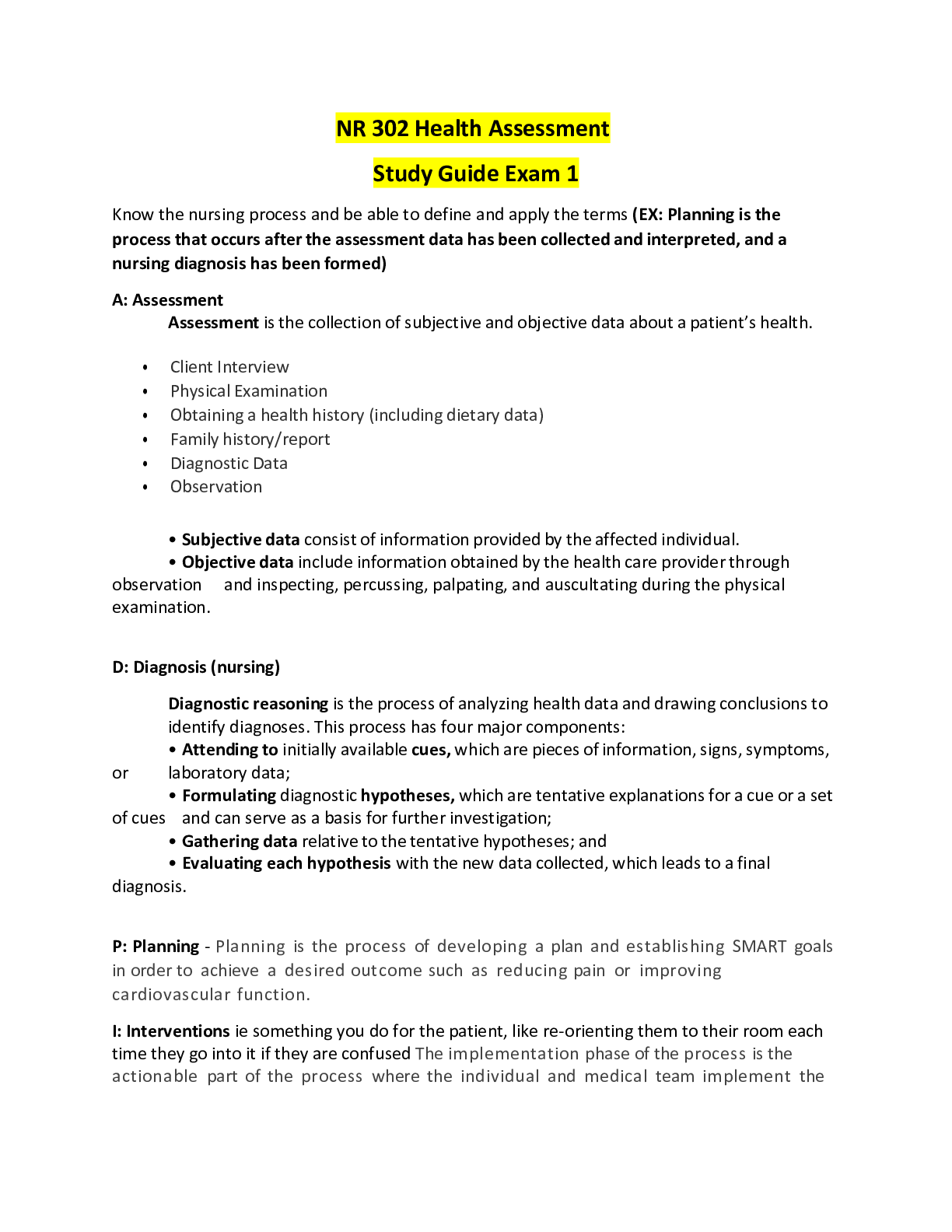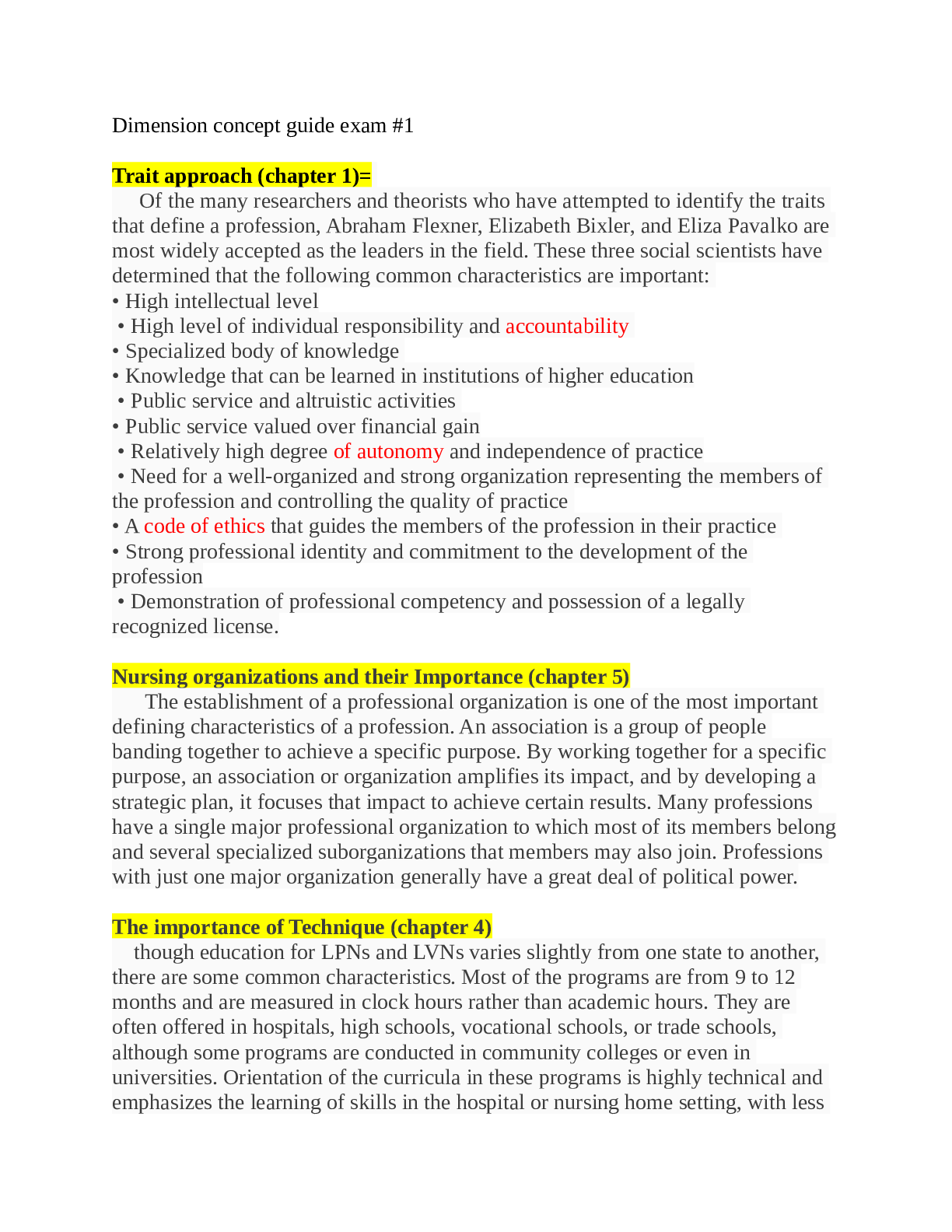Health Care > STUDY GUIDE > NR228 Nutrition, Health, & Wellness Study Guide Exam 1 (All)
NR228 Nutrition, Health, & Wellness Study Guide Exam 1
Document Content and Description Below
Describe the main purpose of health promotion through patient education. – it’s used to increase the level of health of individuals, families, groups, & communities What is the purpose of He... althy People 2020 (HP2020)? – to increase awareness and understanding, provide objectives, identify critical research, eval, and data needs What are the overarching goals of Healthy People 2020 per the direction of U.S. Department of Health and Human Services (USDHHS)? – attain high quality, longer lives free of disease, disability, injury and death; achieve health equity, create social and physical environments, promote quality of life, health development and behaviors What are carbohydrates, proteins, lipids (fats), vitamins, minerals, & water are examples of? – 6 nutrient categories What are the components of proteins, fats, and carbohydrates? – carbs – sugars, starch, fiber; proteins (amino acids) – animal sources & dairy products like milk & cheeses, plant sources – grain, legumes, seeds, nuts, veggies What are the energy values for each nutrient and how is that used to calculate Kcal? – carbs – 4, proteins – 4, fats – 9, alcohols - 7 What is the difference between essential and non-essential nutrients? – essential provides energy, regulates body processes, aids in growth and repair (body can’t make it), non-essential is created from the body Chapter 2: Personal and Community Nutrition Review the terms associated with food selection: o Food preferences – foods we choose to eat when all foods are available at the same time & quantity o Food choice – specific foods that are convenient to choose from when we are actually ready to eat Review the various tools for nutrition and meal planning. Gain an understanding of the use for the tool and what patients may use it. This should include but not be limited to: o Dietary Guidelines for Americans – forms lifestyle & daily pattern recommendations o MyPlate – internet-based tool providing recommendations based on age, sex, & activity level o Exchange List for Meal Planning – a resource for serving sizes o Dietary Reference Intakes - o Dietary standards - o Recommended Daily Allowance - o Acceptable Macronutrient Distribution Ranges - Page 1 of 5 Please be advised that this may not be inclusive of all information on the exam. Also review the other provided course resources & your ATI Review Module. This study source was downloaded by 100000830772748 from CourseHero.com on 05-10-2022 08:40:20 GMT -05:00 https://www.coursehero.com/file/53124481/Nutrition-Exam-1-Study-Guidedocx/ NR228 Nutrition, Health, & Wellness Study Guide Exam 1 o Tolerable Upper Intake Level – the highest level of daily nutrient intake that is likely to pose no risk of adverse effects What is a daily food plan? – a food plan that meets the needs of a person requiring 2000 cals/day Know what information is required on the Nutrition Facts panel: total fats (sat & trans), total carbs (sugars & fiber), cholesterol, Na, total carbs (fiber & sugars), Vit. A & C, Ca, Iron What are the definitions for different food descriptors? – free (has a tiny amount), low (can be eaten fairly often), lean (not as lean as low used for poultry), extra lean (leaner than lean not as lean as low), reduced, less, fewer (25% less of a nutrient or cals); light (contains 1/3 few cals than the original), more (contains 10% more of the daily value), good source of (contain 10-19% of daily value) What is the purpose of food label descriptors and health claims? – to help consumers who try to control their intakes of specific nutrients & food components What is meant by “certified organic”? – the food is certified as fulfilling the USDA standards for farming &/or rearing of animals NOT how the ingredients have been processed during the manufacturing procedures Chapter 3: Digestion, Absorption & Metabolism What are the supportive structures and organs of the digestion system? – the mouth, esophagus, stomach (fundus, body, pylorus), small intestine (duodenum, jejunum, ileum), large intestine (cecum, colon, rectum) What are the three types of muscular actions of the GI tract? – digestion, absorption, & metabolism What is the role of each organ in both digestive and absorption? o Small intestine – completes digestion, absorbs nutrients o Large intestine – final absorption of water, forms and stores feces [Show More]
Last updated: 1 year ago
Preview 1 out of 5 pages
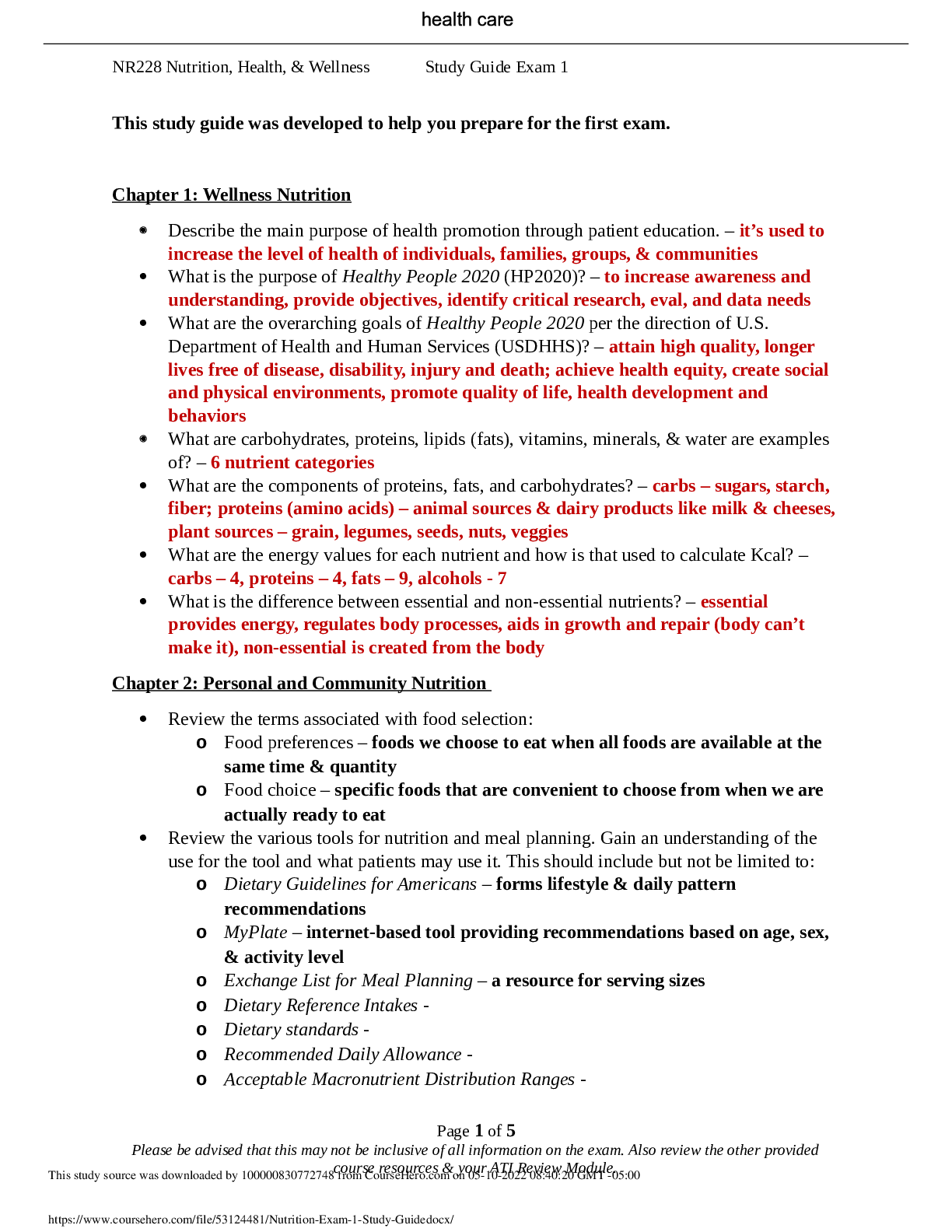
Reviews( 0 )
Document information
Connected school, study & course
About the document
Uploaded On
May 10, 2022
Number of pages
5
Written in
Additional information
This document has been written for:
Uploaded
May 10, 2022
Downloads
0
Views
42

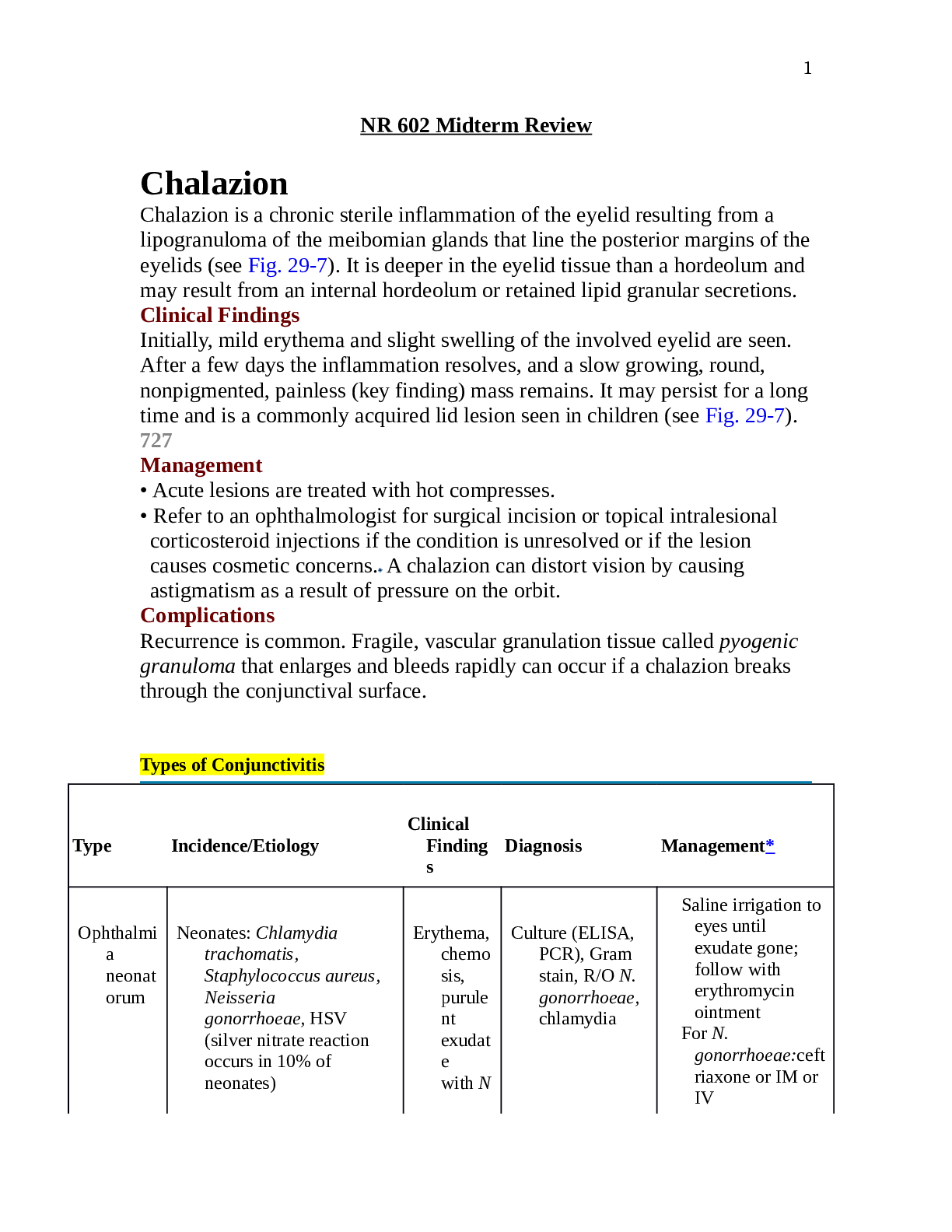
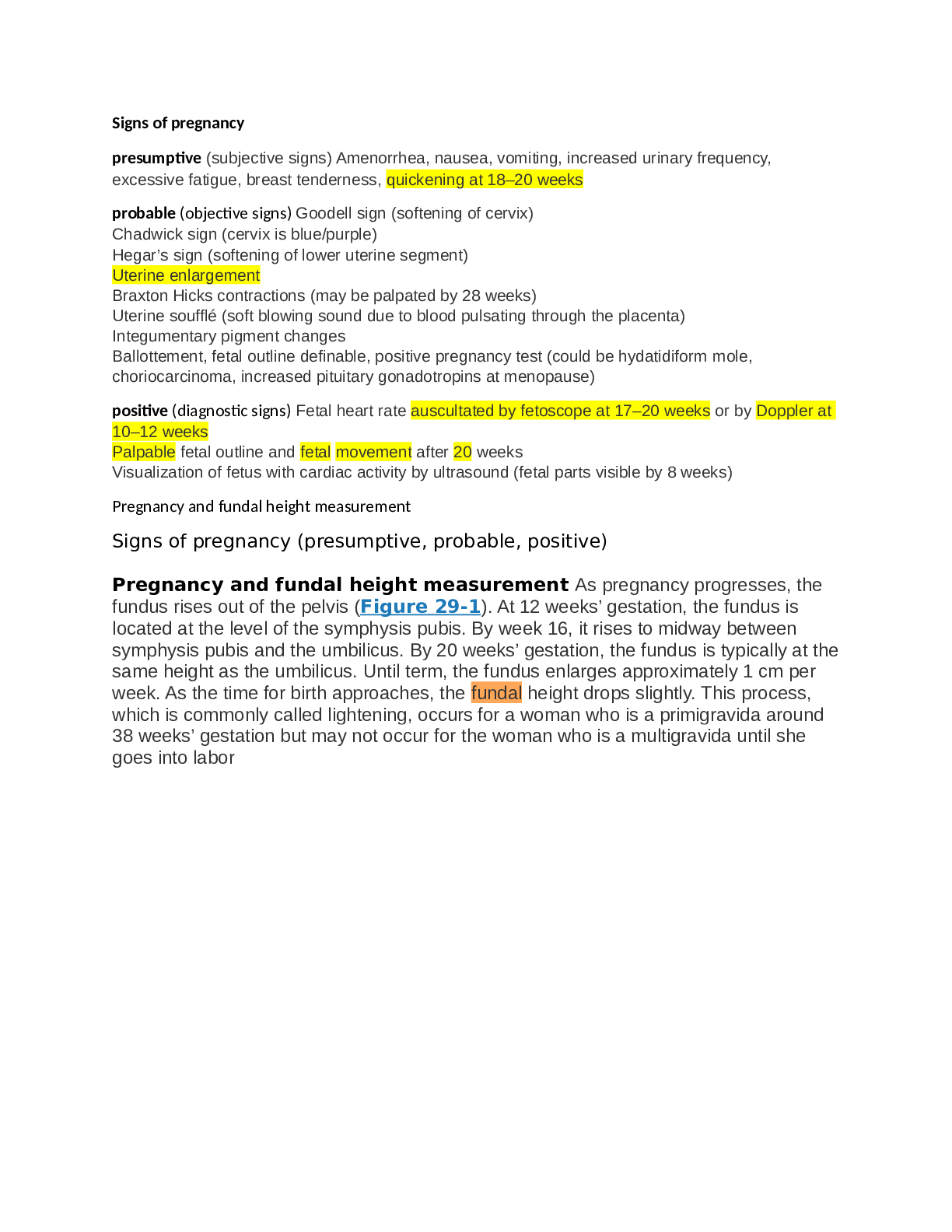
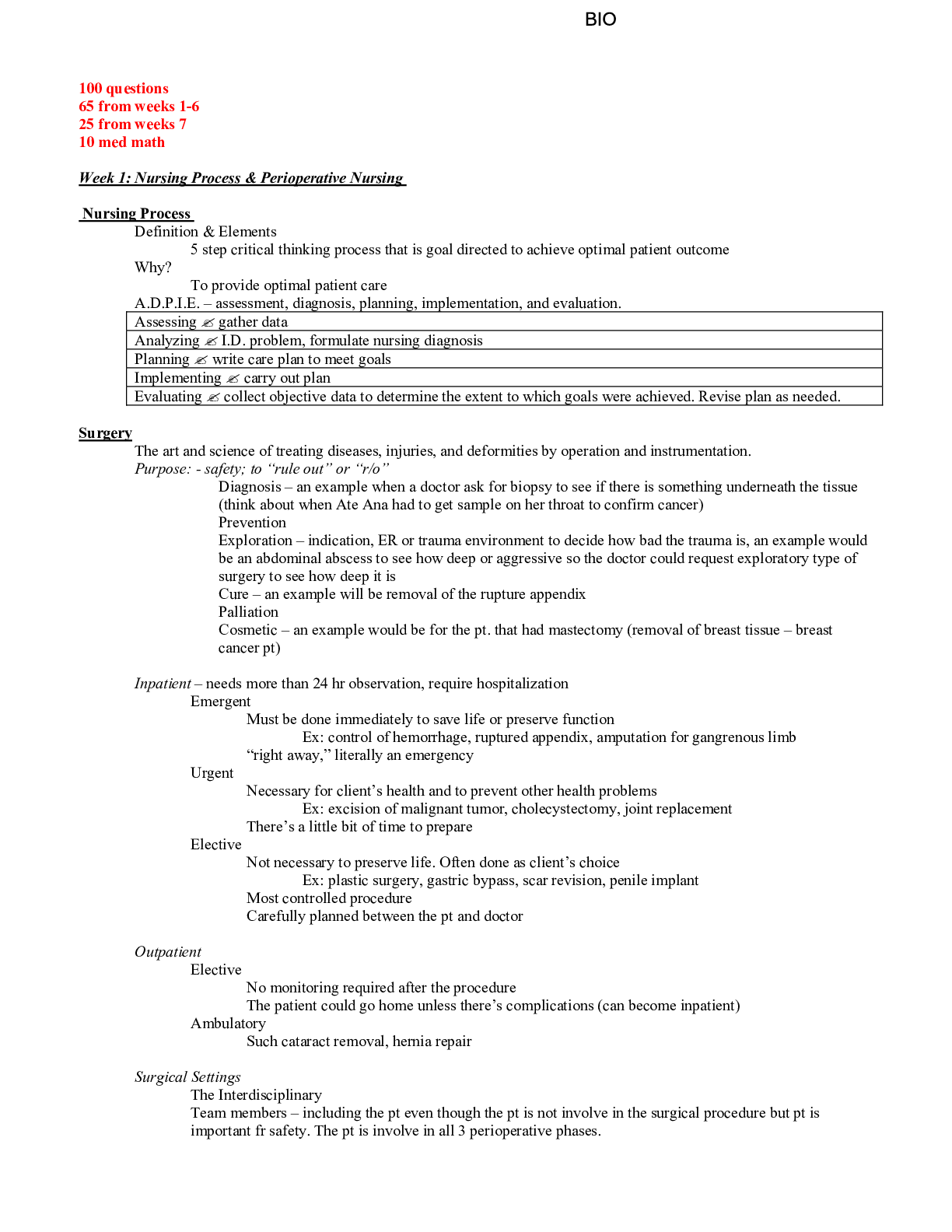

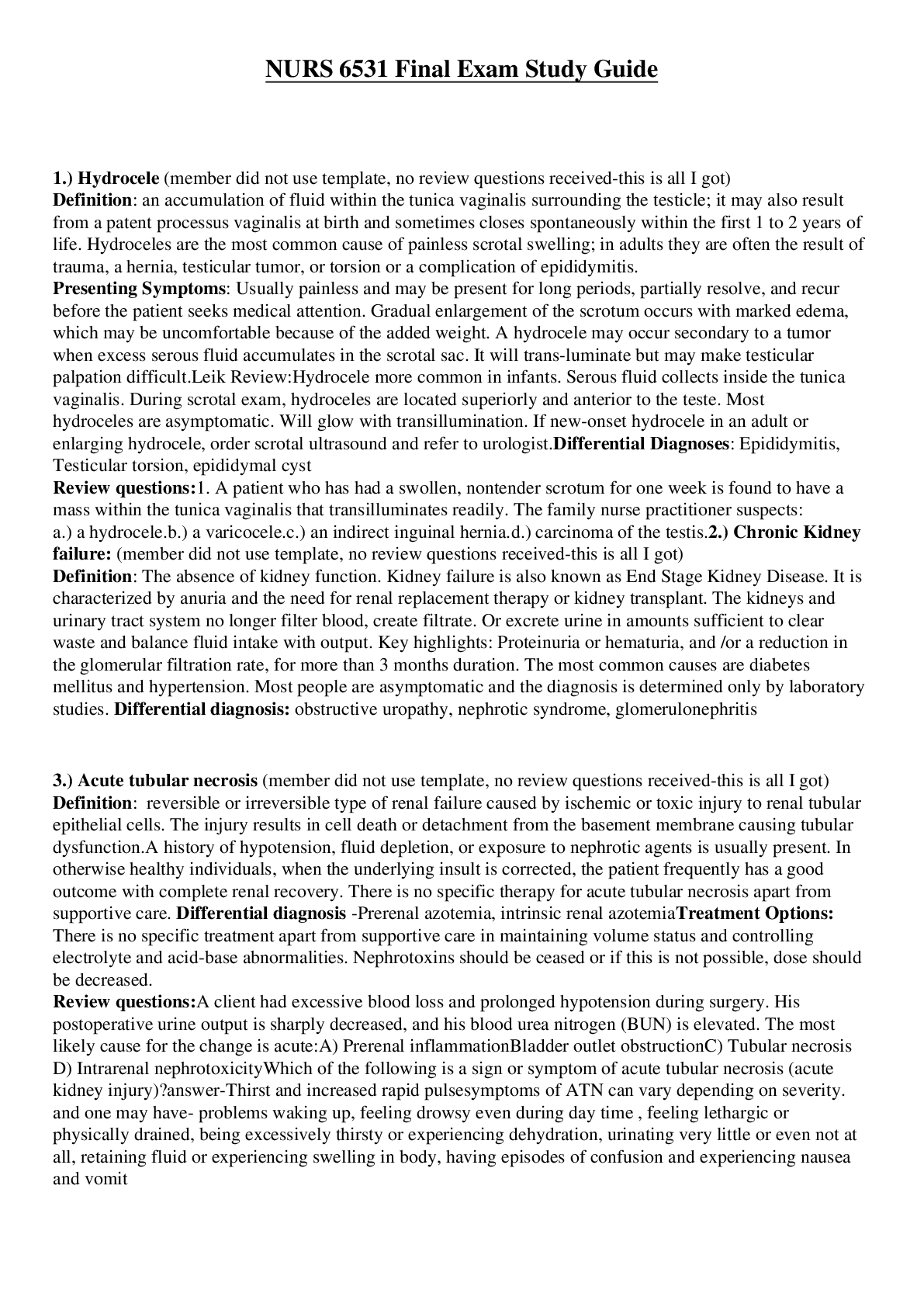

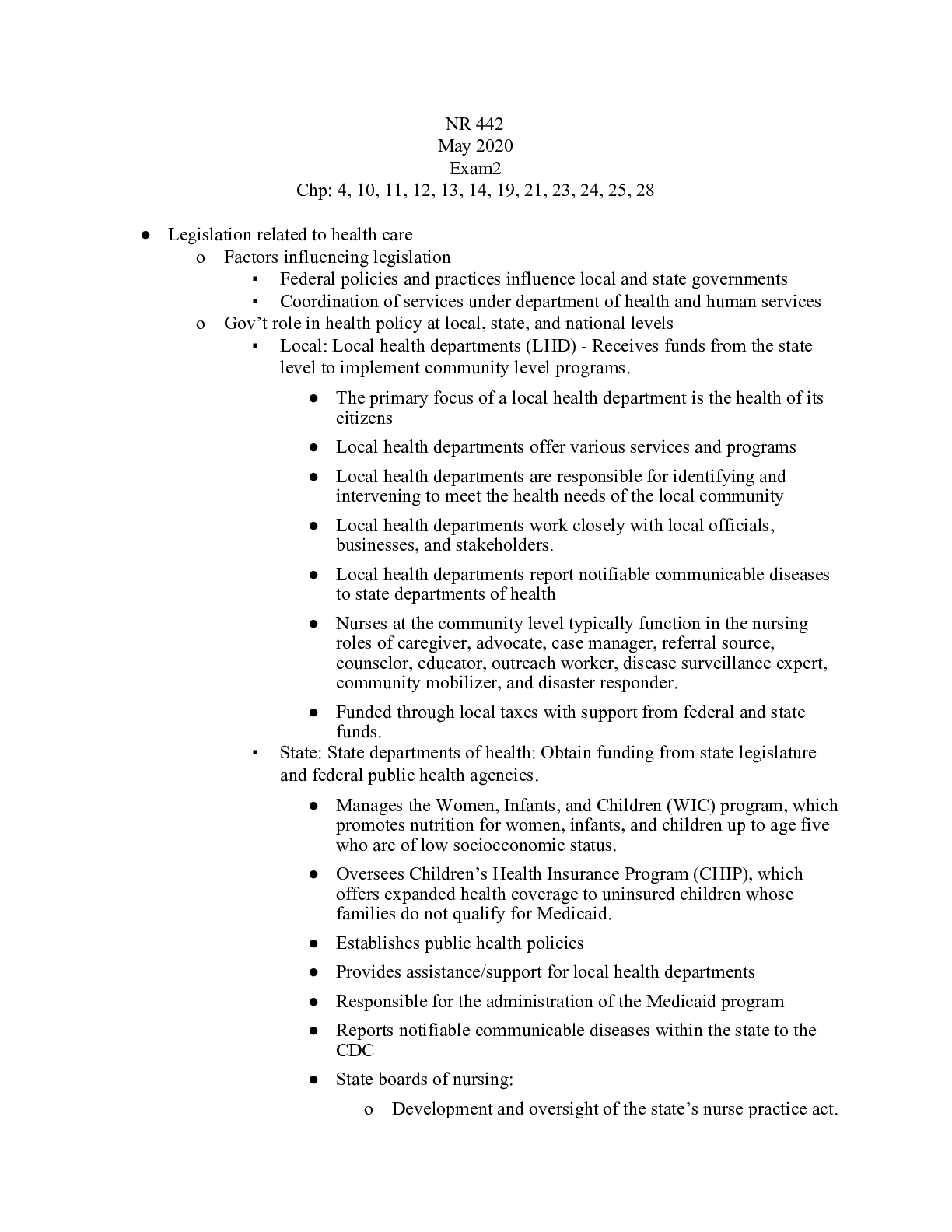


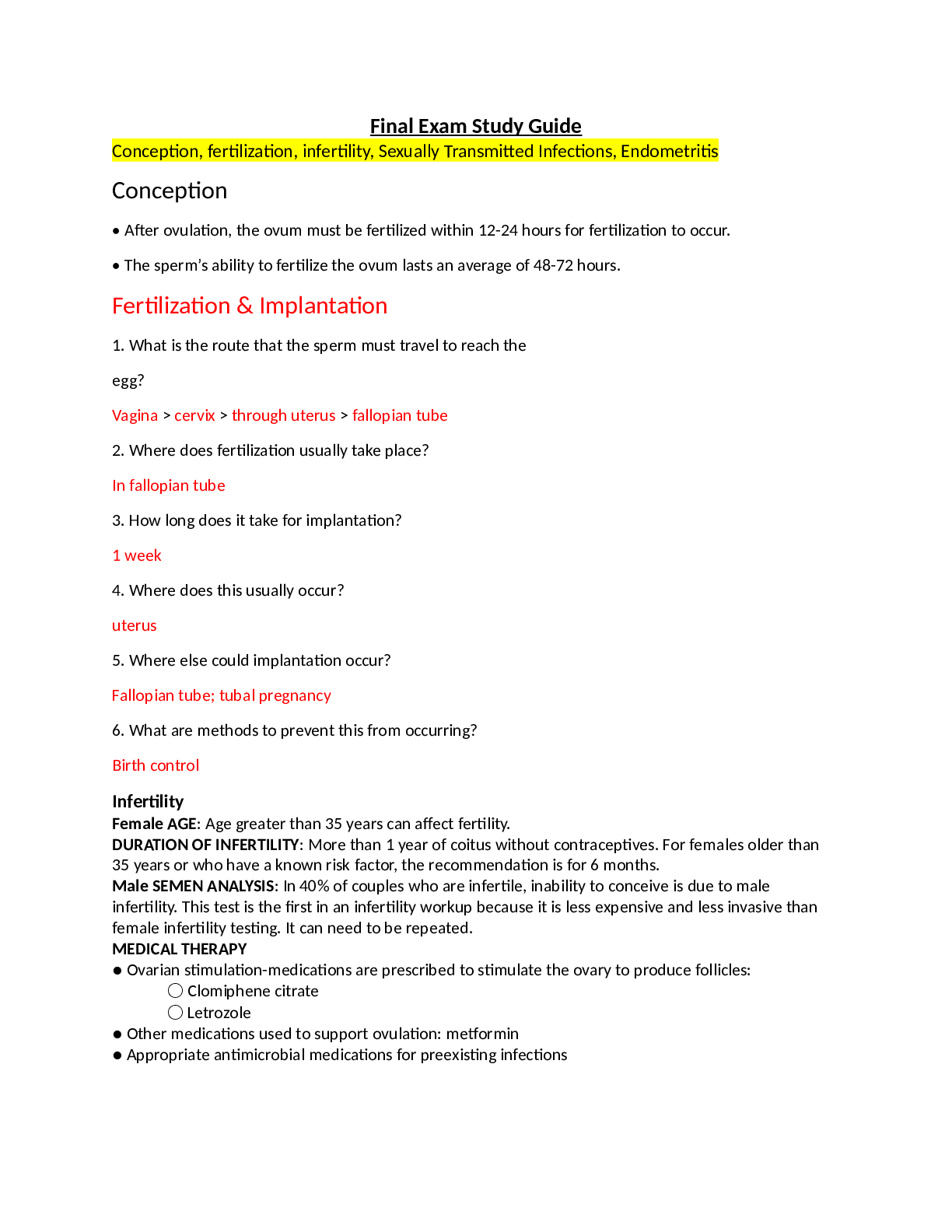
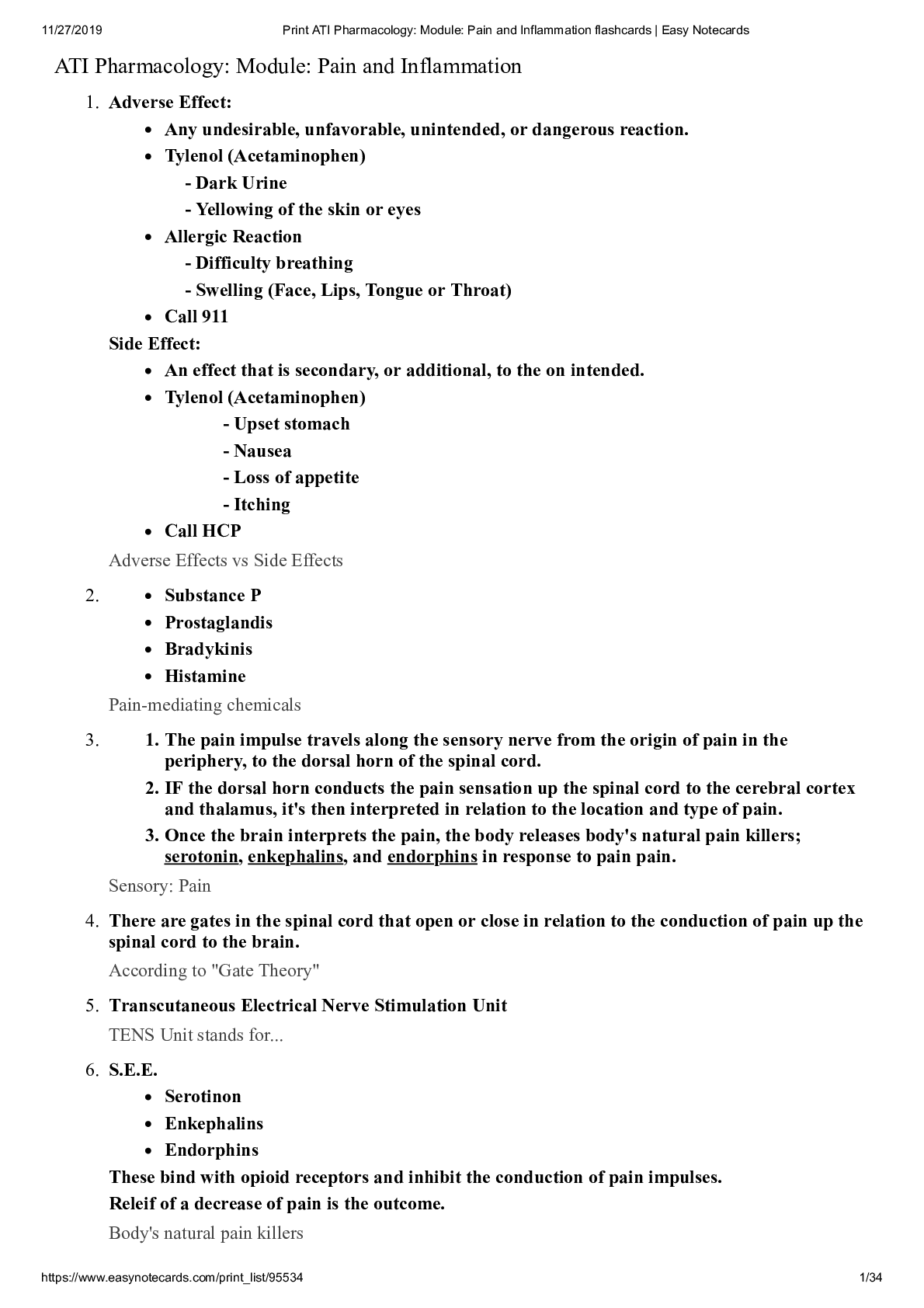
.png)
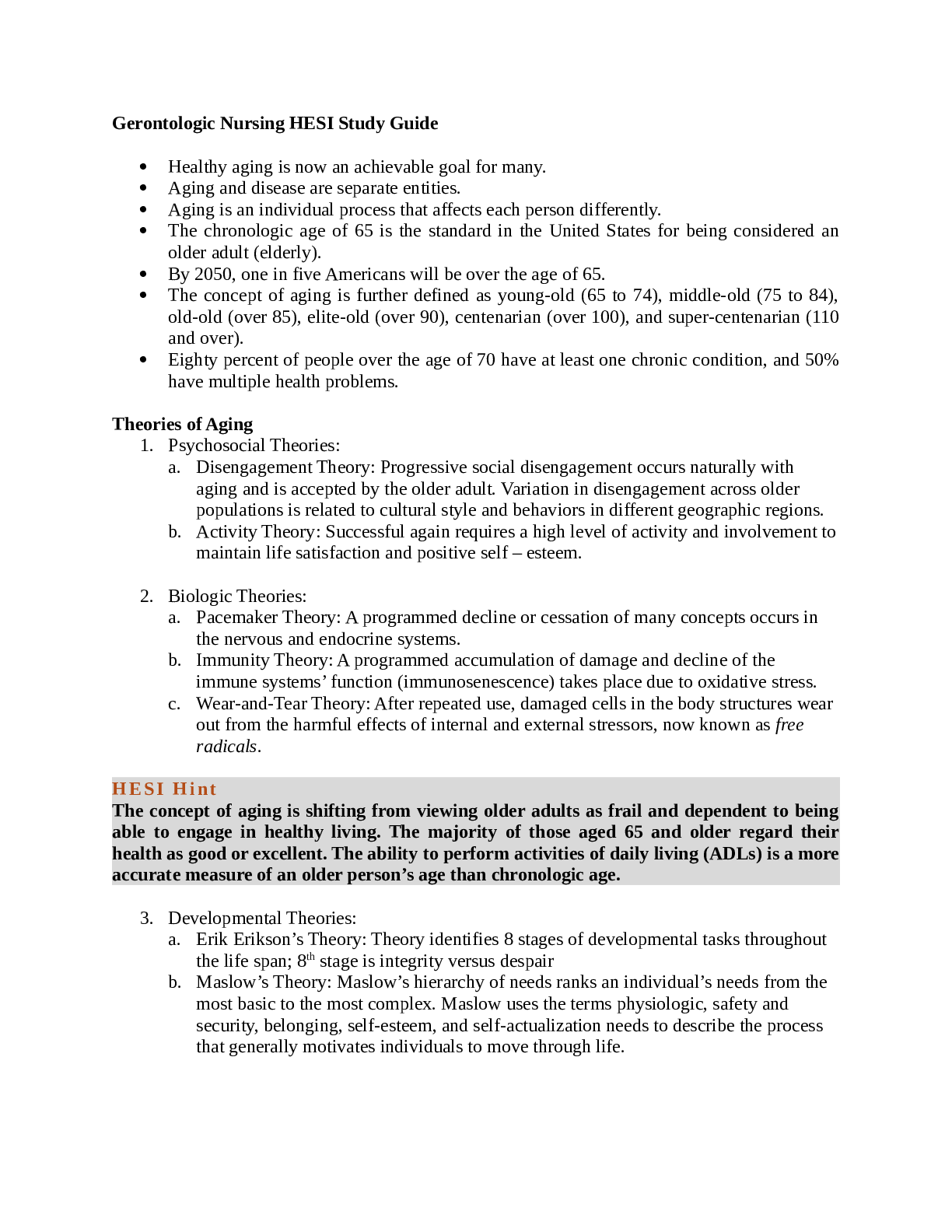
.png)

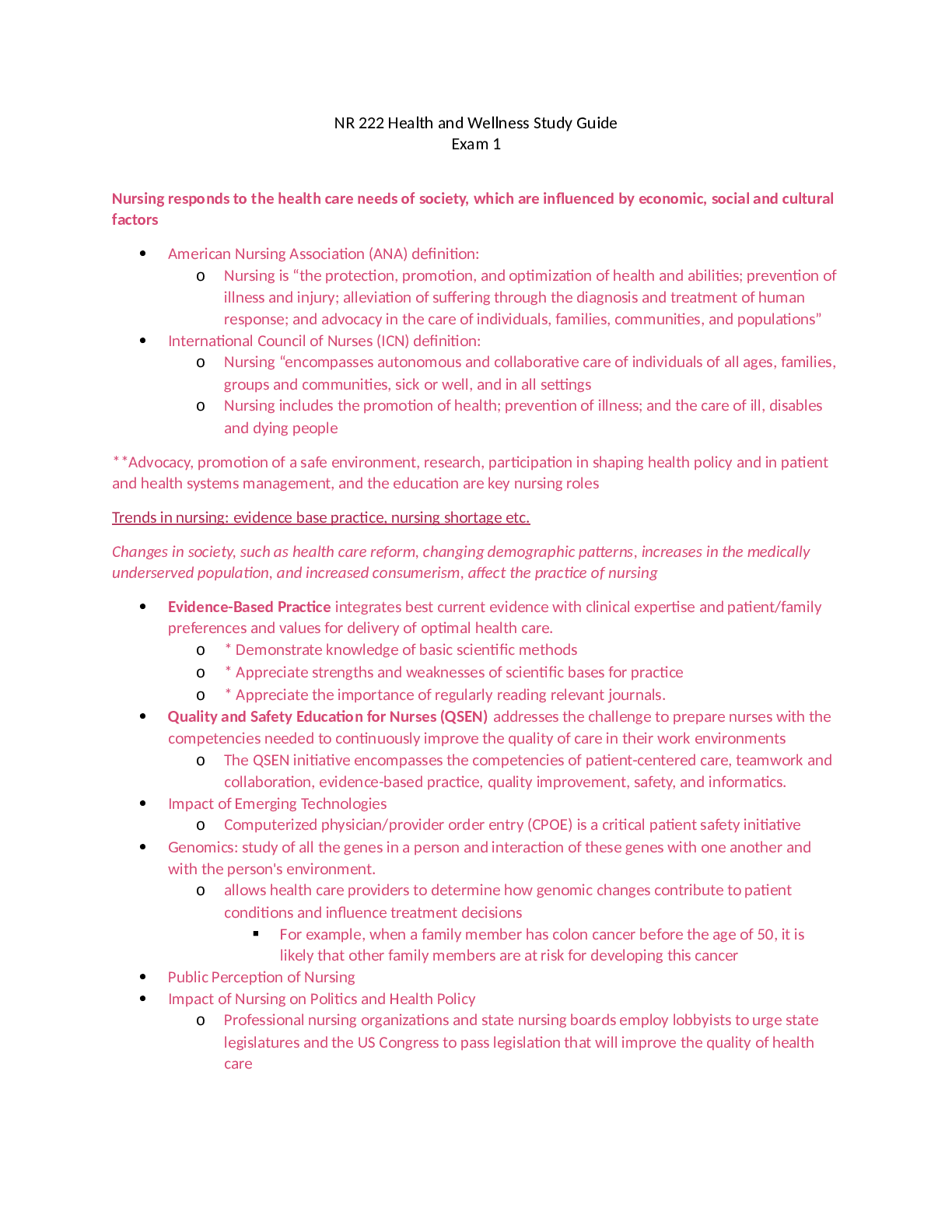
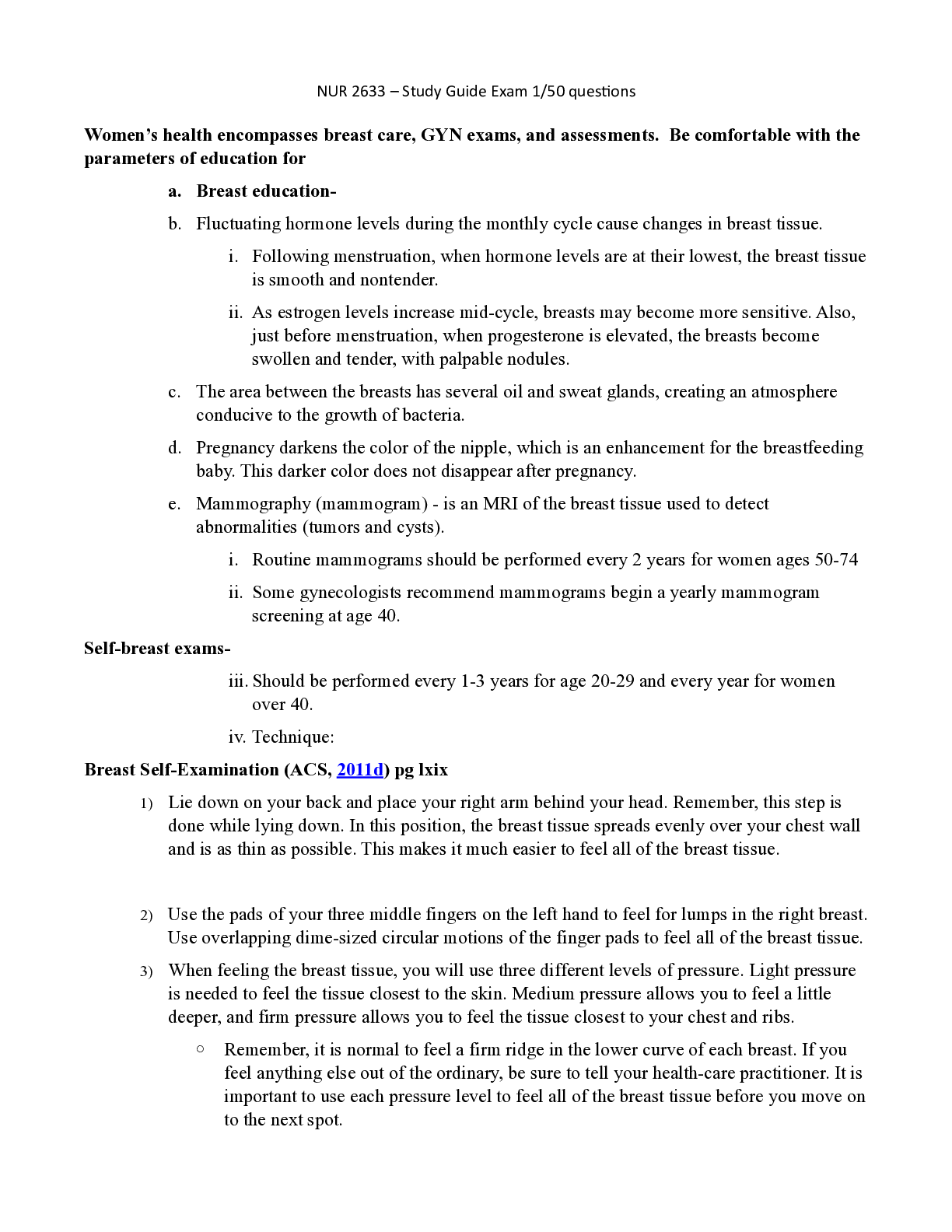

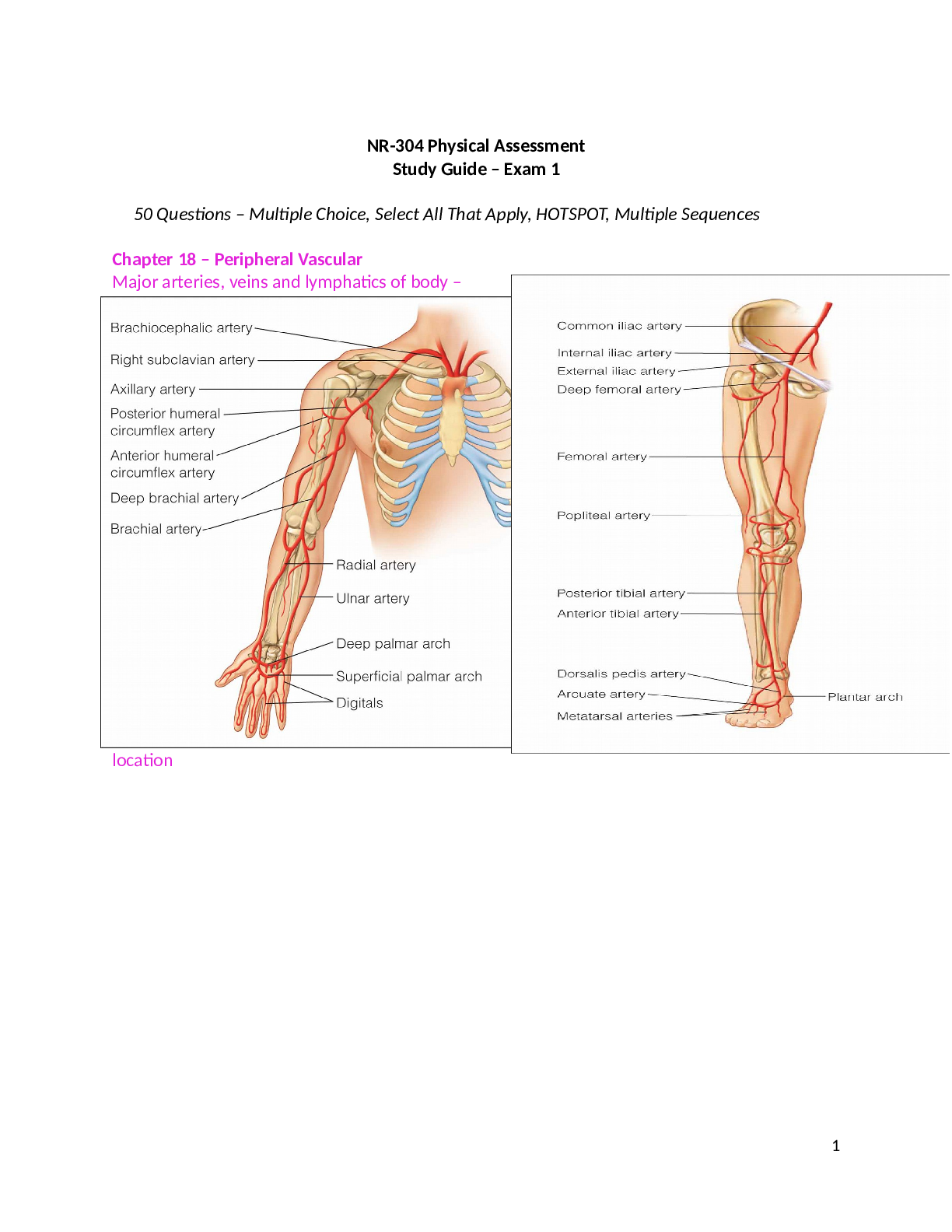
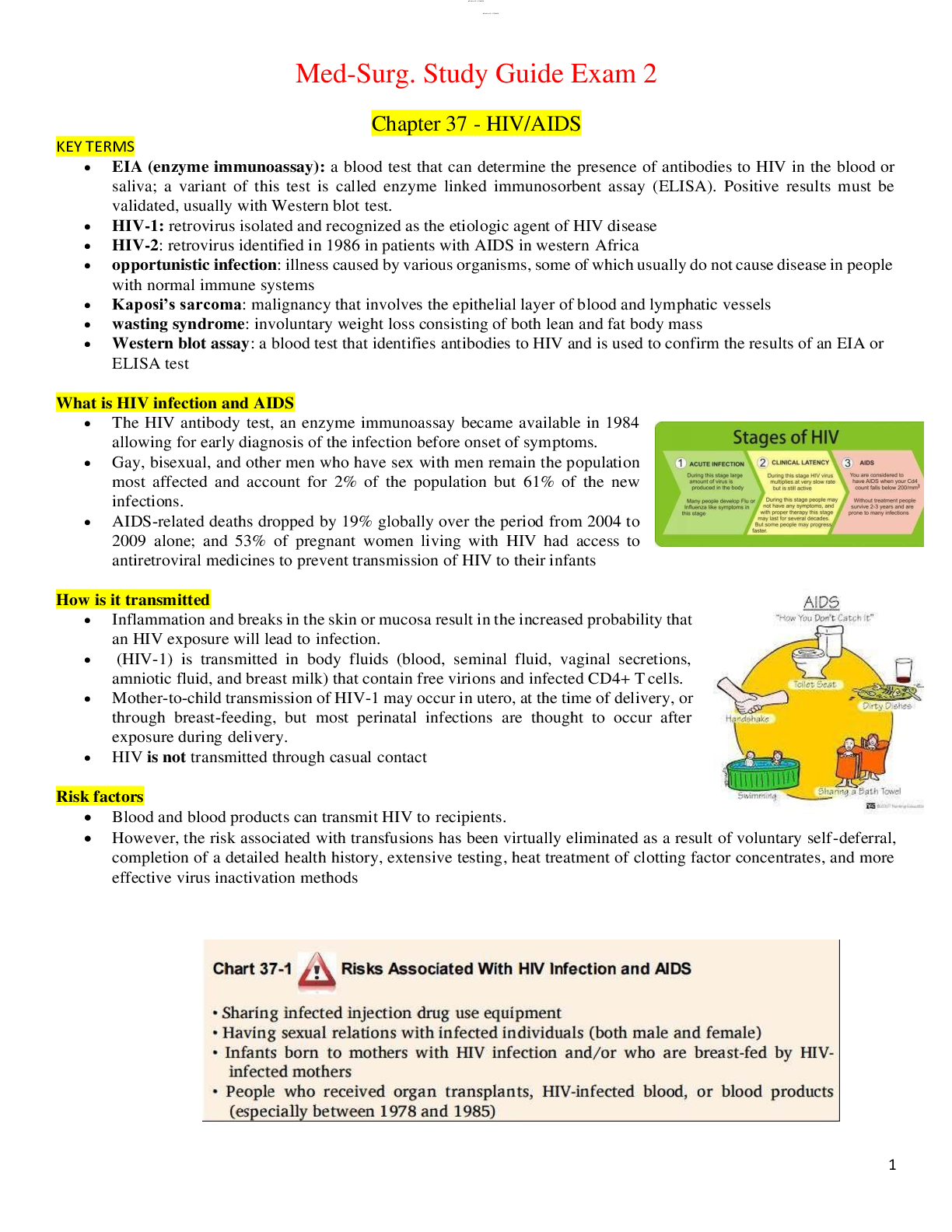
.png)
.png)
